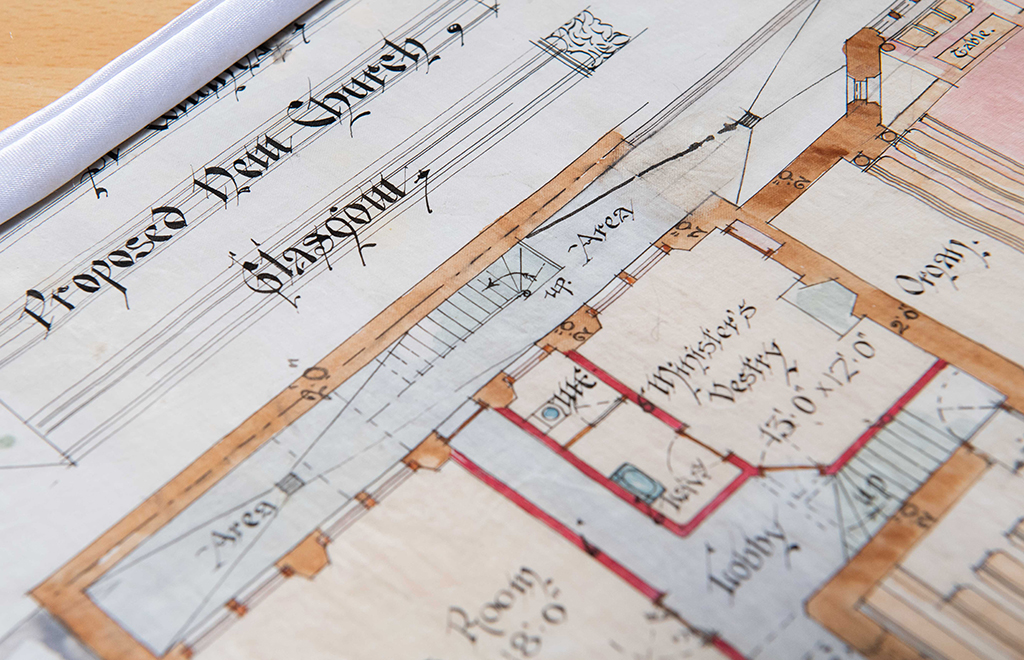
Celebrating Glasgow’s Gaelic culture ahead of the Mod
To celebrate the return of the Mod, a new display entitled Glasgow Gaels, which charts some of the history of the Gaelic community in the city since the late 18th century, has been created.
After an absence of almost thirty years, the Mod – a celebration of Gaelic language and culture – is set to return to Glasgow. Mod Ghlaschu 2019 will take place from Friday 11 until Saturday 19 October.
To mark the festival’s homecoming, Glasgow City Archives presents Glasgow Gaels, a free display of original archival material telling the story of Gaels in Scotland’s largest city. Situated on the 5th floor of the Mitchell Library the small exhibition is on show until the end of the year.
Councillor David McDonald, Chair of Glasgow Life, said: ‘Glasgow City Archives, housed in the Mitchell Library, is an unrivalled collection of all manner of detailed records and information relating the city. As we look forward to welcoming the Mod to Glasgow this interesting new display is sure to appeal to anyone who can trace their family back to the Highlands and Islands of Scotland.
‘Over the years many have sought to set up life in Glasgow and we are proud of our record of welcoming people from across Scotland and across the world. The Gaels contributed so much to our city and have played a huge part in making Glasgow the wonderful place it is today.’
Glasgow City Archive collection explores Glasgow’s rich and fascinating history through the public records held in the Mitchell Library. Open and accessible to all, the displays invite the public to come and explore the wonderful, original records, which in this case, reveal how native and descended Highlanders and islanders lived, studied, worked, worshipped and brought up a family in Glasgow.
Barbara Neilson, archivist with Glasgow City Archives showed off some of the display highlights as they were placed into the cases in the Mitchell Library. These include police personnel records, poor relief applications, a survey of Gaelic speakers in Glasgow schools and items from the Glasgow Gaelic Club. The display also highlights those Glaswegian children who were boarded out to the Highlands and islands.
One of the oldest items on display is the Glasgow Gaelic Club minute book, 1780 -1817. Established in 1780, this club was an important forum where members could speak Gaelic. Interestingly the rules of the club are written in both English and Gaelic, this represents one of the rare instances in the collection where the records are not written only in English.
Also on show are copies of the architectural plans for St Columba’s Church in St Vincent Street, arguably the most well-known of all Glasgow’s Gaelic churches. It began life as the Gaelic Chapel on Ingram Street in 1770, before first moving to Hope Street and then to its present impressive neo-Gothic building in 1904. Nicknamed “The Highland Cathedral” it is now the only mainland Scottish church to offer its main service in Gaelic.

Architectural plans for St Columba’s Church in Glasgow (Photo: Ross Parker / SNS Group)
One of the more recent and still very pertinent items on show is the Survey of Gaelic Speakers in Glasgow Corporation Schools, February 1945. After the 1872 (Scotland) Education Act, English was the only language that schools were permitted to teach in. Despite a significant number of Gaels living in the city, children could not learn, or be taught in, Gaelic at school. This led to a serious decline in speakers of the language. With the realisation that the language would be lost without intervention Glasgow Corporation undertook a survey of every single school in its system to confirm how many Gaelic speakers attended and what the demand for studying Gaelic was. A number of schools had a strong concentration of Gaelic speakers, including Bellahouston Senior Secondary and Woodside Senior Secondary. In 1947 they became the first schools to offer Gaelic as an extra subject on their curriculum and started a process that has led to the provision of Gaelic-medium education in the city.
Glasgow City Archive collection explores Glasgow’s rich and fascinating history through the public records held in the Mitchell Library. The largest single collection is the records of the city of Glasgow itself, which includes records from the modern City Council and its predecessors. Located in The Mitchell it includes Council Minutes, Building Records, Poor Law Records, School Records and others. These records have a wide variety of uses. Building plans are used by students of architecture, but also individual householders or property owners wishing to alter commercial or industrial buildings. Poor Law applications are a wonderful source for the social and family historian.
Glasgow Gaels is located in Glasgow City Archives at the Mitchell Library. It is open until 31 December 2019. For more information visit www.glasgowlife.org.uk/libraries/city-archives
TAGS

